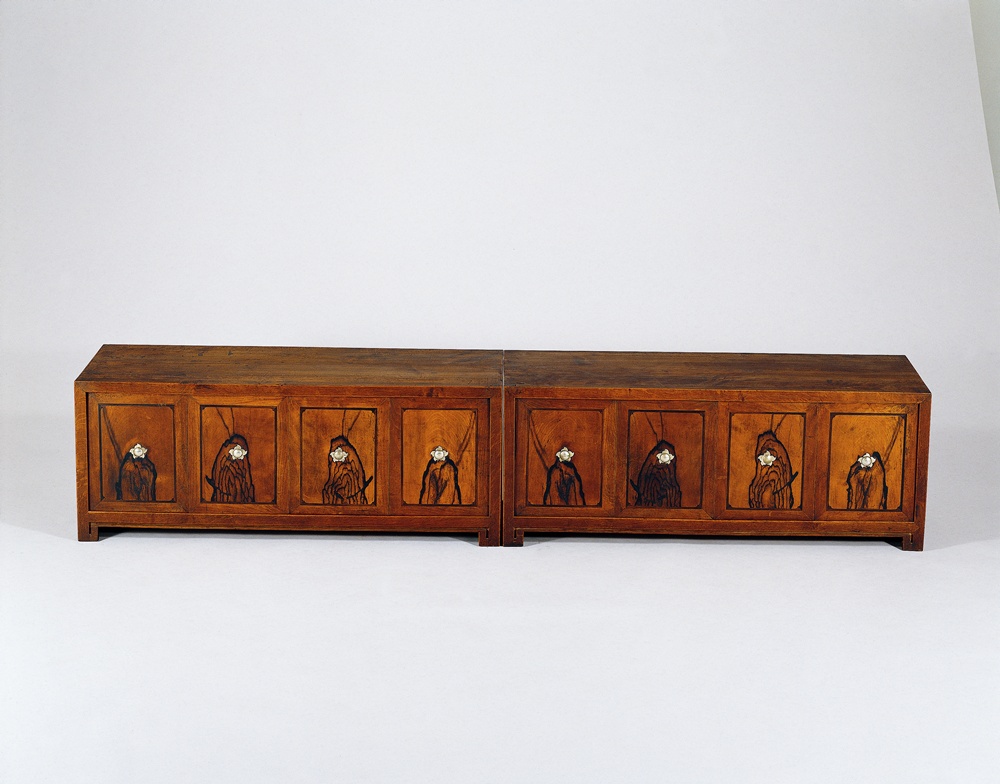- 글번호
- 152591
- 작성일
- 2019.02.27
- 수정일
- 2021.12.04
- 작성자
- 총관리자
- 조회수
- 980
Stationary Chest

Stationary Chest
Joseon dynasty 19th Century
Height 34cm / Width 85.7cm / Depth 25.5cm
This stationery chest known as a mungap was placed under the window, allowing a person seated on the floor to have an unobstructed view of the outside. Small useful items were displayed on top of mungap for decoration, and important objects were kept inside.
This is a double stationery chest composed of a pair of chests placed next to one another. It is also called a “mute chest” since front access is completely blocked off by door panels. To open it, the third door panel from the left must be removed before sliding the other door panels into its vacant slot and removing them as well. Because the chest was not easy to handle, it was used to store valuable objects that were used only infrequently. Its simple form avoids the creation of burdensome clutter in the space.
The front panels are made of old persimmon wood which naturally has an ink-black grain. The wood panels, constructed to be symmetrical, look like an abstract painting.
- 첨부파일
- 첨부파일이(가) 없습니다.